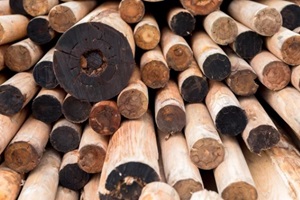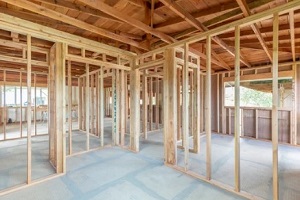 Construction comes with strategic decisions, from the orientation and layout of a building and its internal workings to the types of materials that are best suited for the project. Fire retardant plywood is a common choice across many industries, even though most uses of the material go entirely unnoticed by visitors.
Construction comes with strategic decisions, from the orientation and layout of a building and its internal workings to the types of materials that are best suited for the project. Fire retardant plywood is a common choice across many industries, even though most uses of the material go entirely unnoticed by visitors.
Here is an overview of six of the most common usage niches for fire retardant plywood, as well as an explanation of how this lumber is made so that you can make an informed decision about whether to use it in your projects.
What Is Fire Retardant Plywood?
Fire retardant treated (FRT) plywood is a type of treated lumber that reduces the speed at which fire can spread. When flame comes in contact with fire retardant plywood, it is inhibited by chemical compounds infused into the wood’s pores, reducing the combustibility of the material and slowing the spread.
Pressure Infused v. Coatings
Fire retardant plywood comes in numerous forms, but one of the most common is treated wood. A piece of lumber is placed into a retort—a large cylinder designed to create a vacuum.
The pressure exerted by the machine forces moisture out of the wood’s pores and injects fire-inhibiting chemicals in the moisture’s place. Thus, the fire retardant plywood is treated throughout rather than just on the surface. If the plywood is cut, scratched or cracked, the newly exposed areas will still be treated, unlike coated plywood.
Flame Spread Rating
The effectiveness of FRT plywood at slowing the spread of fire is rated on a scale of 0 to 200. Two benchmark materials are used to establish the scale: inorganic reinforced cement fiberboard = 0; red oak = 100.
The flame spread rating awarded to FRT plywood will fall into one of three Interior Finish or Flame Spread Classifications. Being familiar with Flame Spread Classifications is helpful when planning and constructing buildings as they are referenced in building codes. The three classifications are:
| Flame Spread Classification | Flame Spread Rating |
| Class A (or I) | 0 – 25 |
| Class B (or II) | 26 – 75 |
| Class C (or III) | 76 – 200 |
Smoke Developed Rating
Fire retardant plywood will also have a smoke developed rating, which indicates how much smoke the wood will produce in the event of a fire. The scale also uses inorganic reinforced cement fiberboard and red oak as reference materials.
Similar to the Flame Spread Rating, building codes will reference the required maximum Smoke Developed Rating for the material and application it will be used for. Fire-retardant treated materials will bear a stamp indicating both the Flame Spread and Smoke Developed Ratings.
| Material | Flame Spread Rating | Smoke Developed Rating |
| Inorganic reinforced cement fiberboard | 0 | 0 |
| Pressure-impregnated fire-retardant construction plywood | 0 – 25 | 0 – 25 |
| Fire-retardant-coated construction wood structural panels | 0 – 45 | 0 – 200 |
| Fire-retardant treated lumber | 0 – 25 | 10 – 360 |
| Red oak lumber | 100 | 100 |
| APA wood structural panels (untreated) | 35 – 200 | 25 – 270 |
Where is Fire Retardant Plywood Used?
Fire retardant plywood is used in the construction of structures and furnishings across a diverse range of industries. You can find it in:
Education
Inhibiting the spread of fire is essential in any building. Still, it’s extra important in schooling facilities, where children may not yet be equipped with the reactions and knowledge necessary to stay safe from flames.
School furniture sets, such as desks and chairs, are made from fire retardant plywood. In higher education, dorm bunk beds and cabinets frequently utilize this material due to students’ density in a single building.
Entertainment and Hospitality
With hot lights, potential for pyrotechnics, and high density of visitors in one place, many entertainment venues require that certain elements be made with fire retardant plywood. These include audience seating, the wall panels in the venue, and the stage on which the performers do their work.
Furniture
In commercial spaces, the furniture that shapes guests’ experiences may be made of fire retardant wood to slow the spread of a fire in communal areas and locations with a high density of people. Fire retardant plywood is used for office furniture, public seating, restaurant tables, hotel bed frames, and more to mitigate the risk of fires for guests.
Healthcare
Healthcare facilities are uniquely poised to face fire-related challenges due to the frequent use of oxygen tanks, chemicals, and combustible materials. Walls and ceilings often incorporate fire-retardant treated wood as part of a fire rated system.
Sports
Large sports venues rely on fire retardant plywood for walls and baseline seating structures. Often, this wood is hidden by decoration or wall coverings and is complemented by other non-combustible materials, such as metal, stone or concrete.
General Construction
 Anymore, any new construction for a mixed-use, multi-family or heavily trafficked facility will incorporate the use of fire-retardant lumber and plywood.
Anymore, any new construction for a mixed-use, multi-family or heavily trafficked facility will incorporate the use of fire-retardant lumber and plywood.
Most state and local building codes require that fire retardant wood be used during construction to reduce the risk of fire within communities. Buildings of all shapes and sizes can include this material as part of the wall and ceiling framing and interior walls.
Learn More About Fire Retardant Plywood from the Experts
Whether purchasing for stock or to support your customers’ unique project requirements, trust CLP’s second-to-none depth of experience and technical knowledge to ensure your customers get the high-quality and correctly treated material they need.
If you are a lumber retailer and have questions about treated wood products or need to place an order by the trailer load, unit or piece, contact Curtis Lumber & Plywood at (703) 552-5778.

